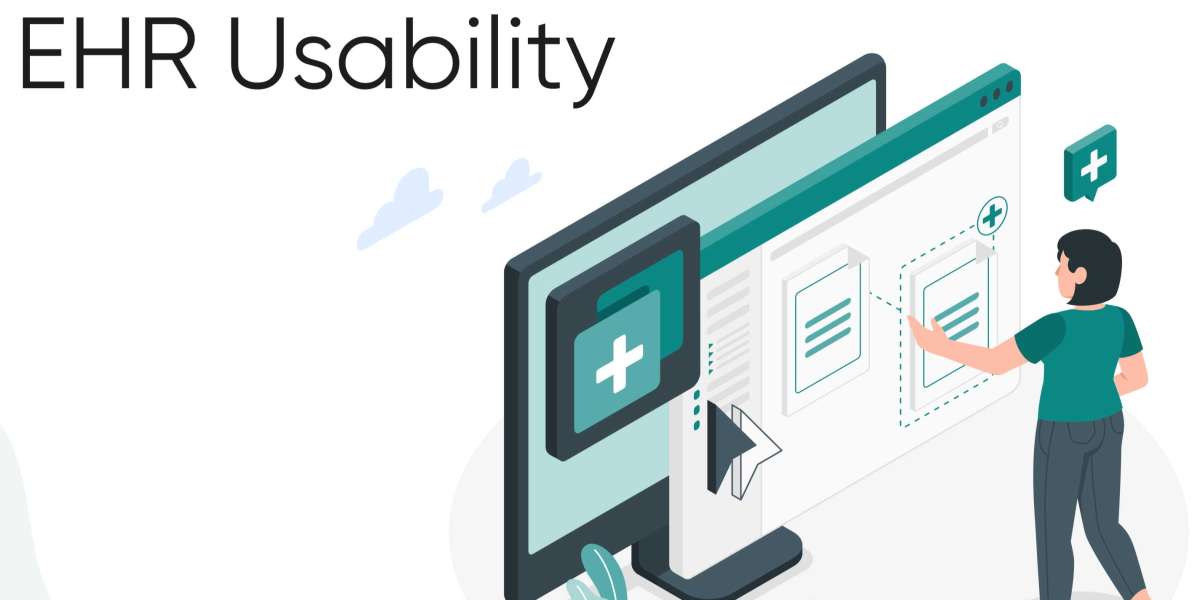Usability in Ophthalmology EMR systems is becoming a pivotal factor in optimizing both the day-to-day operations of ophthalmology practices and the quality of care delivered. For ophthalmology practices, an EMR must go beyond simple record-keeping to become a tool that integrates seamlessly into workflows, enhances accuracy, and ultimately improves patient satisfaction.
This article explores how usability in Ophthalmology EMR software impacts practice efficiency, financial outcomes, and the patient experience.
1. Defining Usability in Ophthalmology EMR
The term "usability" refers to how easy and efficient a system is for users to perform intended tasks. For an Ophthalmology EMR, usability includes aspects like interface intuitiveness, speed of navigation, and integration with diagnostic tools. Poor usability not only affects the performance of individual users, like clinicians and administrative staff, but it also has cumulative effects on practice operations.
Key Usability Attributes
Simplified Navigation: A well-designed interface should allow users to find and input information quickly without unnecessary clicks or searches.
Customizable Templates: Easy-to-customize templates specifically for ophthalmic procedures, including cataract surgery, glaucoma management, and retina evaluations, enable doctors to complete notes and exams accurately and efficiently.
Integration with Diagnostic Equipment: Seamless integration with DICOM imaging, OCT, fundus cameras, and other ophthalmic devices ensures quick access to imaging results within the patient’s records.
2. Operational Efficiency and Workflow Enhancement
High usability directly contributes to improved workflows, reducing the time spent on documentation and administrative tasks. For instance, the ability to autofill information based on previous patient encounters or carry forward data where applicable saves time and minimizes repetitive data entry.
Benefits of Enhanced Workflow
Reduced Patient Wait Times: When documentation is fast and efficient, the time between patients shortens, reducing bottlenecks.
Streamlined Diagnostic Processes: Integration with diagnostic tools allows physicians to review and document findings within the EMR immediately after testing, creating a smoother patient flow.
Error Reduction: With clear templates and standardized protocols, usability-driven EMRs reduce the likelihood of documentation errors, which can delay or complicate patient care.
3. Impact on Patient Experience and Satisfaction
A well-designed EMR can improve patient engagement by facilitating communication, simplifying check-ins, and reducing time spent on paperwork. For ophthalmology practices, where quick and accurate diagnoses are critical, usability impacts not just operational efficiency but patient trust and experience as well.
How Usability Enhances Patient Experience
Patient Portals and Accessibility: EMRs that allow patients to access their test results, treatment plans, and educational materials empower them to take an active role in their care.
Transparency and Accuracy: Accurate documentation directly affects treatment quality. When patients sense the accuracy and reliability of their medical records, their confidence in the practice increases.
Faster Appointments and Real-Time Feedback: Automated reminders and clear documentation help streamline appointments, minimizing patient wait times and ensuring that visits are productive and informative.
4. Financial Impact and Return on Investment
A usability-focused EMR also has financial implications. Efficient workflows reduce staff burden, minimize overtime, and potentially decrease the need for hiring additional administrative staff. Furthermore, accurate coding and streamlined claims processing due to clean and complete documentation can improve revenue flow by reducing denied or delayed claims.
Financial Benefits
Reduced Operational Costs: Automation of administrative tasks allows practices to focus resources on patient care rather than on redundant clerical work.
Increased Patient Retention: A seamless, positive patient experience encourages return visits, which is particularly important for practices relying on long-term care models, such as glaucoma management or diabetic eye care.
Improved Claims Accuracy: With structured documentation, claim submissions contain fewer errors, resulting in faster reimbursements and fewer denied claims.
Customization and Specialization: The Unique Needs of Ophthalmology
Ophthalmology is a highly specialized field, requiring EMR solutions tailored specifically to eye care. A usability-driven ophthalmology EMR should be highly customizable to support the specific needs of practices, whether for routine exams, surgical procedures, or retina and macula care.
Customization Features for Ophthalmology
Specialized Templates: Templates for specific conditions and procedures (e.g., cataract, glaucoma) help clinicians document quickly and in compliance with industry standards.
Adaptive Imaging Interfaces: Direct integration with DICOM and other diagnostic devices allows for the immediate viewing and sharing of images, which is crucial for collaborative care and referral management.
Challenges and Best Practices for Implementing a Usable Ophthalmology EMR
While an EMR may promise usability, practical implementation can pose challenges. Staff training, data migration, and the integration of existing systems all require strategic planning. Practices need to be mindful of these challenges and take steps to ensure smooth adoption.
Best Practices
Comprehensive Training: Initial and ongoing training ensures that every user is comfortable navigating the EMR and leveraging its features fully.
Phased Implementation: Gradual rollout of EMR functions helps staff adjust without overwhelming them.
Continuous Feedback Loop: Regularly collecting feedback from users enables continuous improvement of the system, ensuring it meets evolving needs.
Future of Ophthalmology EMR Usability: Moving Toward AI and Predictive Analytics
As technology advances, Ophthalmology EMRs are beginning to incorporate artificial intelligence (AI) and predictive analytics, which can further enhance usability. Machine learning algorithms, for example, can support clinicians by identifying patterns in patient data, suggesting possible diagnoses, and even offering treatment options based on real-time data analysis.
EHNOTE is at the forefront of this transformation, revolutionizing eye care with intelligent solutions that optimize both clinical and administrative workflows.
AI-Driven Usability Enhancements
Predictive Diagnostics: AI tools can analyze historical data to predict potential conditions based on risk factors, enabling preventative care.
Voice-Activated Documentation: Voice-enabled interfaces allow for hands-free documentation, a huge time-saver for busy ophthalmologists.
Real-Time Data Analysis: Analytics that predict patient flow or identify scheduling bottlenecks allow practices to adjust in real-time, optimizing efficiency.
Why Usability in Ophthalmology EMR Should Be a Priority for Practices
A highly usable ophthalmology EMR transforms not only the user experience for practitioners and administrative staff but also the patient journey from start to finish.
Usability should be seen as a strategic investment, positively impacting clinical care, patient satisfaction, operational efficiency, and the financial bottom line.
In a field as precise as ophthalmology, where every second counts, a user-centric EMR can make all the difference in providing high-quality, patient-centered care.
Conclusion
In an increasingly digital healthcare landscape, Ophthalmology EMR usability is essential. A well-designed system reduces friction points in daily operations, streamlines care delivery, and enhances the patient experience. As new technologies continue to emerge, usability should remain a priority, ensuring that practices not only keep pace with industry advancements but lead in providing efficient, quality eye care.
“Just Looking at the Interface Makes You Feel Relieved!” Said an Ophthalmologist from New York after looking at the simplified interfaces of EHNOTE Ophthalmology EMR. Discover How EHNOTE redefines usability and improves your bottom-line!














